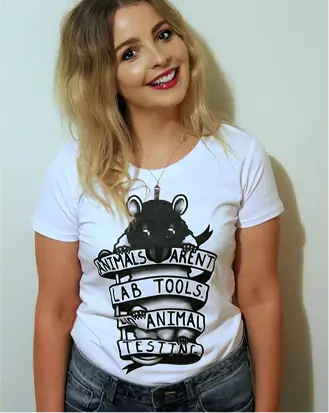Dogs have been used for science in NZ in a variety of ways, including both non-harmful and cruel methods. People are understandably upset by invasive experiments. Companion Animals NZ reported 31% of NZ households include dogs, with most of them stating companionship, love and affection as reasons to getting dogs.1 Research has repeatedly shown the strong bond between dogs and their person and more than once equated it to the bond between parent and child.2,3,4
You can actually register your dog for (likely non-harmful) research at the University of Auckland.5 And Massey University has a Working Dog Centre to do research specifically into genetics and health issues of dogs who are used for work.6
For example, dogs in NZ have been used for:
- testing insecticides, pesticides and other toxins
- attempting to model human diseases and conditions
- measuring the safety of food and ingredients
- testing pain relief
- researching disease detection
- researching nutrition and how it affects biological functions and food preferences
- testing new treatments for skin infections
- studying performance, nutrition and underlying causes of disease in working dogs as a vital part of the animal agriculture sector (in 2009, there were 150,000 working dogs in NZ)
- researching fitness and training regimes in police dogs and training dog handlers
- teaching vet and vet nurse students basic concepts like animal handling and basic clinical/husbandry skills.
Places that use dogs for science in NZ include private companies, universities, and polytechnics.
Dogs used for science in NZ are sourced from breeding facilities, farms, city council pounds and other public sources.*
*According to the Ministry for Primary Industries, public sources include: Public donations, animals obtained from a pound, a pet shop or other public sources. This includes companion animals who are used for the duration of the exercise (e.g. veterinary nurse training).
Discover real-life examples of how dogs have been used in NZ below!
- https://www.companionanimals.nz/2024-nz-pet-data-report
- https://psycnet.apa.org/doi/10.1037/0735-7036.112.3.219 (1998)
- https://doi.org/10.1016/j.cpnec.2021.100071 (2021)
- https://doi.org/10.1027/1016-9040/a000552 (2025)
- https://clevercaninelab.auckland.ac.nz/research/
- https://www.massey.ac.nz/about/colleges-schools-and-institutes/college-of-sciences/our-research/research-projects-and-groups/working-dog-centre
Scanning spines of dogs in CT
Police dogs and racing Greyhounds were sedated and computed tomography imaging was taken.
Testing a breathing mask on cats and dogs
Cats and dogs were held down tightly and fitted with face masks. Their breathing was measured for a while.
Testing nausea in dogs with different anaesthesia
Dogs who are about to have surgery are given different combinations of anti-nausea drugs to test the effects.
Testing different methods for skin sampling
Samples from the skin of dogs are taken in different ways: plucking hair with the roots, sellotape strips pressed down and ripped off several times, acetone-soaked cotton buds and solvent washes.
Studying if farm dogs are overworked
A glucose sensor is stuck between the dog's shoulder blades and sutured in place before a bandage is stapled over it. After being fasted, each dog is studied on glucose levels and activity for two days.
Testing a new biomarker
For regular blood samples over nine weeks, dogs are fasted overnight at the lab and returned to their owners the next day until the following sampling.
Studying the influence of diet on working farm dogs
Dogs working on farms are fed either a premium diet or a standard "home-kill plus tux" diet. All dogs have a collar to measure activity. Body weight, condition, and blood samples are recorded regularly for a year.
Studying how long morphine affects dogs
Dogs scheduled to have ovaries and uterus removed at a teaching clinic are used. Premedication, including morphine, is given 45min before the surgery. Dogs are fasted for 12 hours and water is withheld for about 1 hour before surgery. Blood samples are taken regularly for 4 hours.
Testing what dogs prefer to eat
Dogs are fed three different diets (either high fat, high carb, or high protein) over 28 days once a day. The dogs are offered each of the three diets at once and in high quantities. Regular stool samples are taken. Blood samples are taken from dogs that have been fasted (18 hours with no food).
Testing how sensitive some dog breeds are to pain
Dogs were tested for their pain threshold by having a disk the size of a coin placed onto one of their forelegs. This disc could be heated up remotely. Several tests with 10-minute breaks in-between were performed, where the disk temperature was raised until the dog showed signs of pain. Almost half the dogs showed burn marks after testing.
Testing the fitness level of police dogs
Police dogs are fitted with a catheter for a whole week and get infused with a marker solution. They are fitted with an activity measuring collar and regularly have blood sampled.
Testing intermittent fasting
Dogs will be fed three different ways for one week each. A high carb diet twice a day, a high carb diet every two days, and a high fat, low carb diet every two days. Each dog will have 12 blood samples taken throughout the study.
Practising first aid on working dogs
The 2-day course involved training students with mannequins, placing an IV catheter in the handler's dogs (dogs were lightly sedated), a live demo and practical exercises on anaesthetised sheep that would killed afterwards.
Refining treatment for a (human) genetic disorder
Puppies with the genetic disorder MPS IIIA were treated with enzymes injected directly into the spinal fluid near the brain. Treatment was done until 22 -24 weeks old and varied in dose and frequency. In the end, the puppies were killed for dissection.
Testing a gene therapy for Mucopolysaccharidosis
Newborn puppies are genotyped and divided into treatment groups. Some are left untreated. Some are injected with potential medication. The injection is into the neck vein or into the liver vein. For that, puppies are anaesthetised, have their belly cut open and the drug injected into the liver vein. All puppies are killed after regular blood and one spinal fluid sample.
Learning when anaesthesia is lethal
The anaesthesia of pound dogs was gradually increased to dangerous levels. Students also practised taking blood samples, placing catheters and giving blood transfusions to the dogs, all while a teacher supervised.





